The neurons that restore walking after paralysis
- PMID: 36352232
- PMCID: PMC9668750
- DOI: 10.1038/s41586-022-05385-7
The neurons that restore walking after paralysis
Abstract
A spinal cord injury interrupts pathways from the brain and brainstem that project to the lumbar spinal cord, leading to paralysis. Here we show that spatiotemporal epidural electrical stimulation (EES) of the lumbar spinal cord1-3 applied during neurorehabilitation4,5 (EESREHAB) restored walking in nine individuals with chronic spinal cord injury. This recovery involved a reduction in neuronal activity in the lumbar spinal cord of humans during walking. We hypothesized that this unexpected reduction reflects activity-dependent selection of specific neuronal subpopulations that become essential for a patient to walk after spinal cord injury. To identify these putative neurons, we modelled the technological and therapeutic features underlying EESREHAB in mice. We applied single-nucleus RNA sequencing6-9 and spatial transcriptomics10,11 to the spinal cords of these mice to chart a spatially resolved molecular atlas of recovery from paralysis. We then employed cell type12,13 and spatial prioritization to identify the neurons involved in the recovery of walking. A single population of excitatory interneurons nested within intermediate laminae emerged. Although these neurons are not required for walking before spinal cord injury, we demonstrate that they are essential for the recovery of walking with EES following spinal cord injury. Augmenting the activity of these neurons phenocopied the recovery of walking enabled by EESREHAB, whereas ablating them prevented the recovery of walking that occurs spontaneously after moderate spinal cord injury. We thus identified a recovery-organizing neuronal subpopulation that is necessary and sufficient to regain walking after paralysis. Moreover, our methodology establishes a framework for using molecular cartography to identify the neurons that produce complex behaviours.
© 2022. The Author(s).
Conflict of interest statement
The authors declare competing interests: G.C., J.B., F.W., L.A., R.D., S.K., S.P.L. and J.W.S. hold various patents in relation to the present work. G.C. is a consultant for ONWARD medical. G.C., J.B. and S.P.L. are minority shareholders of ONWARD, a company related to the presented work. The other authors declare no competing interests.
Figures

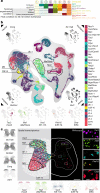

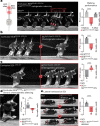


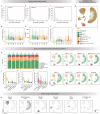
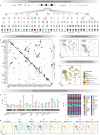
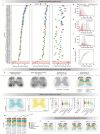




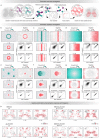


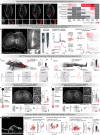


Comment in
-
Neurons that promote recovery from paralysis identified.Nature. 2022 Nov;611(7936):452-453. doi: 10.1038/d41586-022-02234-5. Nature. 2022. PMID: 36352104 No abstract available.
Similar articles
-
Targeted neurotechnology restores walking in humans with spinal cord injury.Nature. 2018 Nov;563(7729):65-71. doi: 10.1038/s41586-018-0649-2. Epub 2018 Oct 31. Nature. 2018. PMID: 30382197
-
Multi-pronged neuromodulation intervention engages the residual motor circuitry to facilitate walking in a rat model of spinal cord injury.Nat Commun. 2021 Mar 26;12(1):1925. doi: 10.1038/s41467-021-22137-9. Nat Commun. 2021. PMID: 33771986 Free PMC article.
-
Walking naturally after spinal cord injury using a brain-spine interface.Nature. 2023 Jun;618(7963):126-133. doi: 10.1038/s41586-023-06094-5. Epub 2023 May 24. Nature. 2023. PMID: 37225984 Free PMC article.
-
Spinal Cord Stimulation and Augmentative Control Strategies for Leg Movement after Spinal Paralysis in Humans.CNS Neurosci Ther. 2016 Apr;22(4):262-70. doi: 10.1111/cns.12530. Epub 2016 Feb 18. CNS Neurosci Ther. 2016. PMID: 26890324 Free PMC article. Review.
-
Therapeutic Stimulation for Restoration of Function After Spinal Cord Injury.Physiology (Bethesda). 2017 Sep;32(5):391-398. doi: 10.1152/physiol.00010.2017. Physiology (Bethesda). 2017. PMID: 28814499 Review.
Cited by
-
PEG-chitosan (Neuro-PEG) induced restoration of motor function after complete transection of the dorsal spinal cord in swine. A pilot study.Surg Neurol Int. 2023 Dec 13;14:424. doi: 10.25259/SNI_928_2023. eCollection 2023. Surg Neurol Int. 2023. PMID: 38213450 Free PMC article.
-
Spatial transcriptomics: Technologies, applications and experimental considerations.Genomics. 2023 Sep;115(5):110671. doi: 10.1016/j.ygeno.2023.110671. Epub 2023 Jun 21. Genomics. 2023. PMID: 37353093 Free PMC article. Review.
-
Human Cervical Epidural Spinal Electrogram Topographically Maps Distinct Volitional Movements.J Neurosci. 2024 Aug 7;44(32):e2258232024. doi: 10.1523/JNEUROSCI.2258-23.2024. J Neurosci. 2024. PMID: 38960719 Free PMC article.
-
Stimulation of corticospinal neurons by optogenetic cAMP inductions promotes motor recovery after spinal cord injury in female rats via raphespinal tract modulation.Nat Commun. 2025 Jul 1;16(1):5885. doi: 10.1038/s41467-025-61018-3. Nat Commun. 2025. PMID: 40592902 Free PMC article.
-
Advances in Neuromodulation and Digital Brain-Spinal Cord Interfaces for Spinal Cord Injury.Int J Mol Sci. 2025 Jun 23;26(13):6021. doi: 10.3390/ijms26136021. Int J Mol Sci. 2025. PMID: 40649800 Free PMC article. Review.
References
Publication types
MeSH terms
LinkOut - more resources
Full Text Sources
Other Literature Sources
Medical
Molecular Biology Databases
Research Materials

